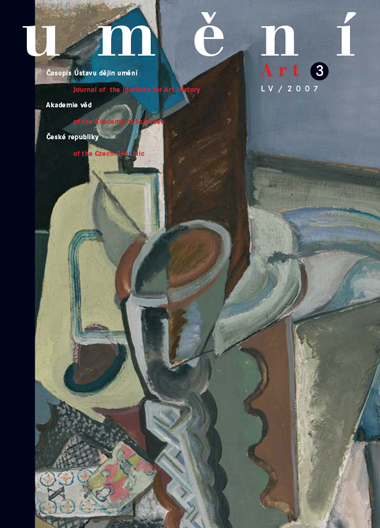Jindřich Vybíral
Jednoduchý nábytek Leopolda Bauera
This study deals with the early modern furniture of Leopold Bauer from 1900-1903. Much as most of his colleagues from the Wagner school, this artist garnered his first successes not in the field of architecture, but in the arts and crafts. As a member of the radical Art Nouveau generation which grew up on the theories of Gottfried Semper, he was convinced that the decorative arts were producing determining stimuli for the renewal of the art of building. That is why he conceived furniture design as preparation for the development of a 'useful style' for future modern architecture. In opposition to 19th-century historicism, but also to the fashionable curved lines of Art Nouveau, he required that form should correspond to function and the demands of health as well as with the materials and production techniques used. In his furniture, he first developed a subtle play between matter and emptiness, symmetry and asymmetry and the static and the dynamic. He abandoned this approach shortly thereafter, however, and turned towards voluntary limitation and an elementary expressivity. Instead of rounded lines and open volumes, his furniture took on strictly right-angled, square, compact forms. He took not only contemporary British design as his model, but also Biedermeier, an Austrian and at the same time temperamentally middle-class version of late Classicism. In it, the ideologues of early modernity found the main strengths contemporary furniture was supposed to have-clean, constructive and practical shapes, solid fabrication, respect for materials and sober ornamentation. Bauer's 'simple furniture' was never truly unornamented, however. The obverse of the elementary forms were the refined colour schemes, the expensive materials and the impeccable workmanship which the architect made use of to create an atmosphere of exceptional luxury and richness of shapes in his interiors. The range of shapes he availed himself of was not merely a response to practical requirements; it also fulfilled a symbolic role. The 'surplus of forms' evident in his furniture served as 'explanatory articulation' (Ernst Hans Gombrich), reinforcing the impression that the pieces he produced were practical, functional and structural-in short, they were supremely modern.
Full-text in the Digital Library of the Czech Academy of Sciences:
https://kramerius.lib.cas.cz/uuid/uuid:9059ce53-5c66-4116-946b-a27650ab4efc
< back

